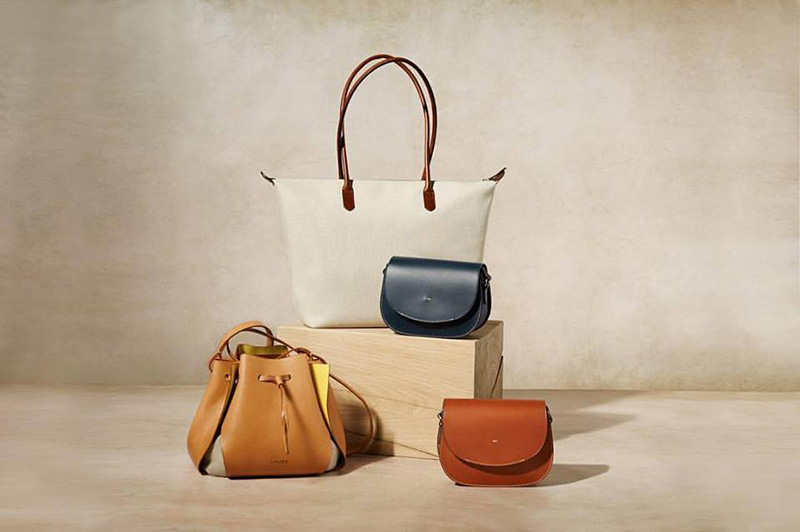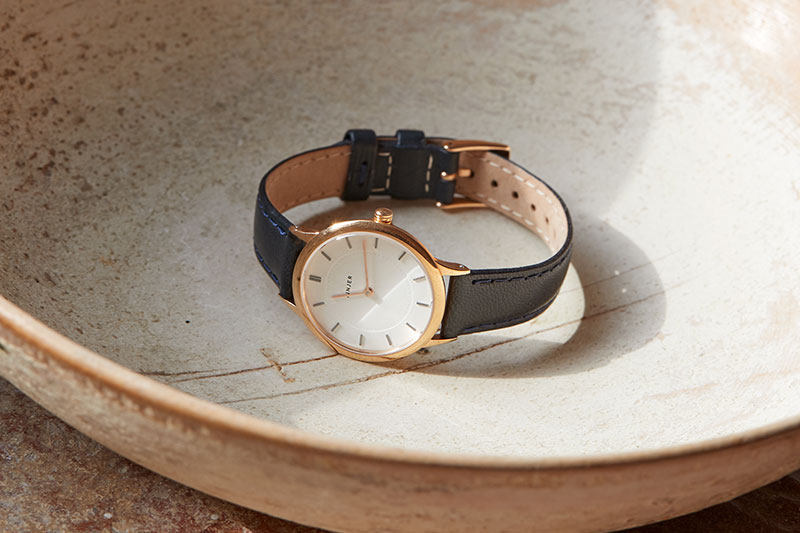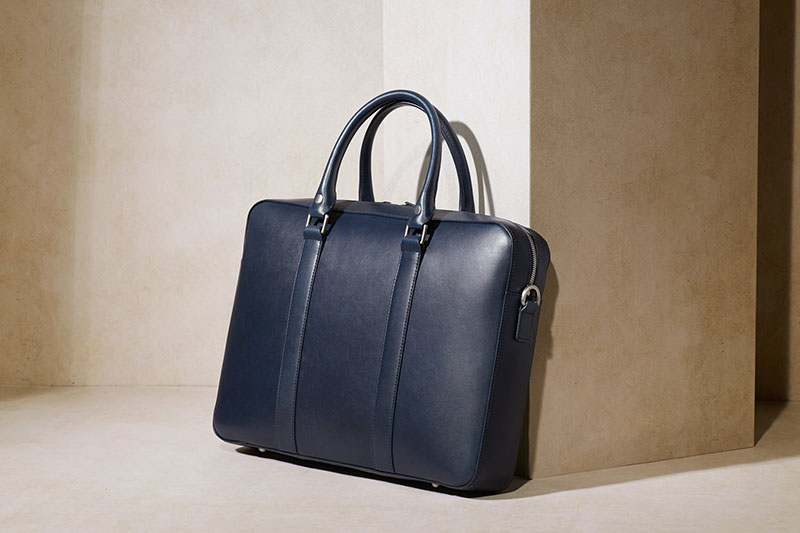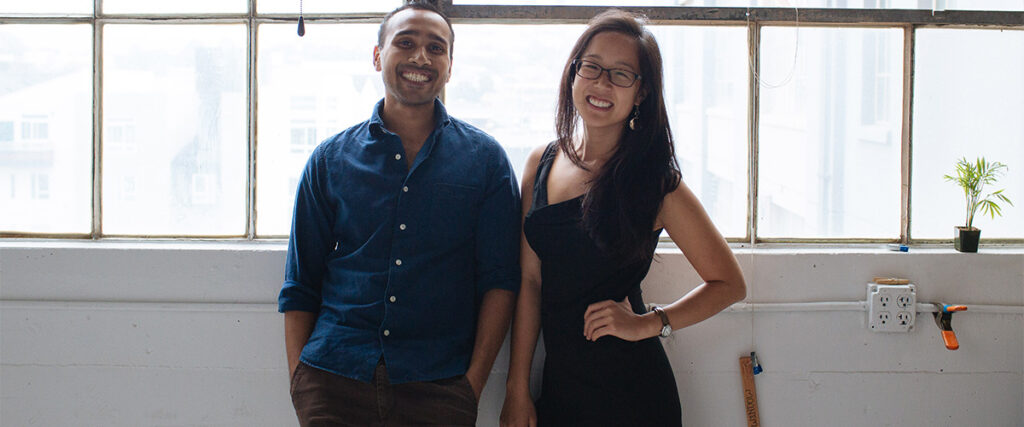On a quest to deliver top quality, luxury accessories direct to consumers without the hefty price tag, Linjer is a brand tapping into the luxury consumer of tomorrow. Here, co-founder Jennifer Chong tells their story.
Inspired by and appalled at how much megabrands mark-up the prices of their luxury handbags, Jennifer Chong and Roman Khan set out on a mission with Linjer back in 2014. Their goal: to provide luxury leather handbags and watches crafted in Italy without breaking the bank. It is a proposition that has been more than well received – they have generated USD 1 million in sales in their three years of business. Here, Jennifer Chong, one half of Linjer, discusses their journey.

Born in Hong Kong, raised in Toronto, and educated in the US, Jennifer Chong graduated with an Economics degree from Dartmouth College in 2010. She met Roman Khan through her sister in Hong Kong, and not long after, the couple set out on their entrepreneurial road. Like so many businesses, theirs started out thanks to a personal need. Roman wanted a briefcase, and it seemed all that was on offer was either extremely expensive or much cheaper and badly made. They spotted a gap in the market. By focusing on timeless design, tapping into the premium they feel their generation places on quality over branding and then cutting out the middleman and selling directly to the consumer at a lower price for luxury, they were sure they could offer something new.

Their hunch was validated by their first product, the Soft Briefcase, which they launched via a crowdfunding campaign on Indiegogo in 2014. Having put USD 20,000 of their own money into the venture, the pair raised USD 185,000 in 24 hours and went on to generate USD 1 million in sales in their first 14 months. In 2016, they added watches to their range of bag and wallets, raising close to USD 1 million in a Kickstarter campaign to fund them.
After four years of hard work, Linjer is reaping the rewards. Receiving rave reviews from The Wall Street Journal, Business Insider and GQ, they are expanding from their new base in Hong Kong. We sat down with Jennifer to ask her how they’ve done it.
How did your career change come about and why?
After university, I became a management consultant for a few years, but I also had an entrepreneurial itch on the side. I quit my job when I had finished paying off my student loans because I felt I had some freedom and the chance to do whatever I wanted without any strings pulling on me.
Why did you decide fashion was the space to launch your company after working in management?
I had always found it very frustrating to go shopping (and I still do) because I could never find something that’s perfect. I feel that a lot of brands in recent years have lowered their standard of quality. They’re trying to cut corners by trading out good quality materials with lower quality ones and hoping nobody will notice. When I buy something, I want it to last and I appreciate the attention that goes into making a product. I don’t care about the label at all. I just care about the quality.

As for launching Linjer, what led us to start was a personal need. Roman was looking for a leather briefcase for work but the good quality ones cost around USD$2,000, which was way too expensive for what they were actually worth. I had learnt a lot about the supply chain through the shoe venture that I had been working on, so I knew a lot about leather. We then thought of making bags for people who appreciate luxury but don’t necessarily want to pay 20 times more for it.
What opportunities did you see with Linjer in the beginning?
I think opportunity exists in a lot of places where it’s hard to find high-quality stuff. When Roman was choosing a briefcase, the choice was between something that would fall apart in 3 months or a high-quality bag with a ridiculous price tag attached to it because of its label. We work with the same suppliers as luxury brands but we don’t charge the absurd amounts that they do.
Do you think by lowering your price on your products, you compromise the stability and future of your brand?
We set out, in the beginning, to price our products extremely competitively for the quality. It’s something we know our customers really appreciate. Our customers are very smart; they do a lot of research before they buy things. They understand what they’re getting, and we believe that our pricing has been the cornerstone of our brand because they recognise what value we’re giving them.
What sort of quality can you offer at your price?
All the leather we use is full-grain, vegetable-tanned leather, which is how only 10% of the world’s leather is produced now. It’s a very artisanal method of tanning from tree bark, as opposed to chrome tanning with chemicals which was developed as a mass market way of producing leather. In our watches, we only use sapphire crystal for our faces. These are scratch resistant, whilst a lot of cheaper brands or mid-market brands who pretend to be luxury will use mineral crystals which scratches easily. And again, their leather straps are made of vegetable-tanned leather, a beautiful medium which we source from Italy.
What are your views on starting up a fashion brand in Hong Kong?
Most of our start up phase was outside of Hong Kong, but I will say that there’s a great infrastructure here, especially in terms of sourcing. Still, there are so many parts to launching a brand. For example, you need to find photographers to shoot your lookbook or e-commerce photos, content producers to write the content, a web developer if you’re aiming for an online presence.
You mentioned how both you and Roman didn’t have any formal design education. What was the learning process like? Can you give us some examples?
Neither of us studied design, but Roman went to art school which gave him a little bit more exposure to that kind of world. When it came to designing the products, it was just coming up with a concept of what we wanted and then transitioning that into a physical product. I was putting different elements together and scanning pencil drawings into Photoshop. We’ve been able to figure it out on our own. We just had a lot of passion and a lot of will so the factories were willing to take a chance on us.
How many briefcase designs did you come up with before reaching the final one?
The briefcase took 7 prototypes. We spent a year trying to find the right suppliers, redrafting the designs, finding the right leather and generally not settling until we had it perfect.

Where do you see the opportunity in fashion now? Do you spot any trends forming?
There are definitely opportunities for the millennial generation. People are becoming more and more concerned with quality, as opposed to our parents’ generation where brands and labels were something that they were more into. I think that we’re a part of this wave.
Over the last 3 years, what would you say your biggest challenge was?
Keeping up with demand. We have been trying to get our supply chain to keep up with the demand as we often go out of stock. When you’re trying to produce a certain level of quality, you can’t rush and cut corners. I think this will continually be an issue for us — finding the right partners that can support us and making sure that we have a constant supply.
And expect the unexpected. We always make forecasts but you never know what’s going to happen. A lot of the time we wouldn’t have been expecting so many people to want something, and then people would post a picture of our bags on Instagram. A lot of the time you can’t predict these things.
How have these 3 years changed you in terms of understanding how the luxury industry works and its expectations?
When we started out, there was one key insight that really motivated us to start Linjer and it was that luxury brands mark up their products by crazy amounts, like 10 or 20 times. We are using the same suppliers as these brands, so we know how much it costs – it’s pretty egregious what traditional luxury brands do.
What has been your biggest risk taken so far?
Quitting my job in 2013 was the biggest risk I had taken, and it wasn’t even to start Linjer; it was to start another venture. This was the first time I quit my job. Then Roman and I took turns to work full-time jobs whilst the other person worked for Linjer full-time. This way we are able to keep a roof over our heads, keep the bills paid and it allowed us to stay bootstrapped and not take outside funding. Everything now is a lot easier than previously because we’ve both been full time now for the last 2 years and have dedicated ourselves to Linjer. But we haven’t ever had an office with a team sitting in it. Everybody is remote, but we’re focusing on expanding now as we have positions available.
Last but not least, can you share some tips on how to become successful on Kickstarter?
Kickstarter is becoming more and more crowded and it’s a lot harder than a few years ago because there are just so many projects being launched and it’s hard to get organic traffic.
1. Make sure you have a really great product. It goes without saying but it’s so important to get this step right.
2. Make sure you have a really great supplier ready to work with you. Definitely do a lot due diligence and ask for references before you commit to a supplier.
3. When you launch, make sure that you have a lot of people who are already excited about you launching. A lot of people think that you just go on Kickstarter and launch a product and then some random strangers come upon your campaign, and the next day you’ll have thousands of dollars in funds or expenses – it’s not how it works! You need to really build the lead yourself and make sure you have an email list so that when you launch you have people who are really excited about it and will come in on the first day and support your project.
4. After you’ve launched you need to make sure you have a plan for driving traffic towards your Kickstarter campaign page. You can’t just rely on Kickstarter for that.
Having moved their headquarters back to Hong Kong in 2017, Jennifer explains they are preparing Linjer for the next phase of growth with hopes of expanding the team size significantly. If you would be interested in joining Jennifer and Roman in building Linjer as a brand, head over to their website for further details.
Details
www.linjer.co
Have you spotted a gap in the market too?
Maybe we can help you realise your entrepreneurial dreams. Our professional co-working spaces at the Hive Wan Chai come with an extensive network of expert innovators who are pushing the boundaries of what’s been done before. Just email [email protected] about our FREE Try Out Tuesdays.




